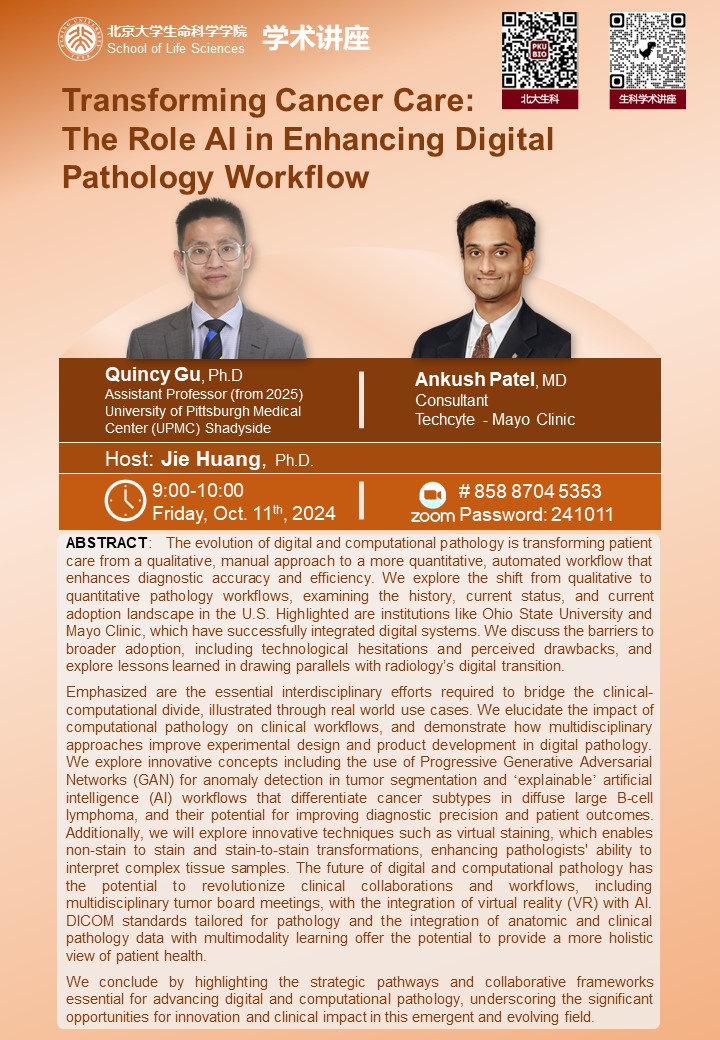Speaker: Quincy Gu, Ph.D, Assistant Professor (from 2025), University of Pittsburgh Medical Center (UPMC) Shadyside
Ankush Patel, MD, Consultant, Techcyte - Mayo Clinic
Time: 09:00 - 10:00 a.m., Oct 11, 2024, GMT+8
Venue: Zoom Meeting ID: 858 8704 5353 (Passcode: 241011)
Abstract: The evolution of digital and computational pathology is transforming patient care from a qualitative, manual approach to a more quantitative, automated workflow that enhances diagnostic accuracy and efficiency. We explore the shift from qualitative to quantitative pathology workflows, examining the history, current status, and current adoption landscape in the U.S. Highlighted are institutions like Ohio State University and Mayo Clinic, which have successfully integrated digital systems. We discuss the barriers to broader adoption, including technological hesitations and perceived drawbacks, and explore lessons learned in drawing parallels with radiology's digital transition.
Emphasized are the essential interdisciplinary efforts required to bridge the clinical-computational divide, illustrated through real world use cases. We elucidate the impact of computational pathology on clinical workflows, and demonstrate how multidisciplinary approaches improve experimental design and product development in digital pathology.
We explore innovative concepts including the use of Progressive Generative Adversarial Networks (GAN) for anomaly detection in tumor segmentation and "explainable artificial intelligence (AI) workflows that differentiate cancer subtypes in diffuse large B-cell lymphoma, and their potential for improving diagnostic precision and patient outcomes.
Additionally, we will explore innovative techniques such as virtual staining, which enables non-stain to stain and stain-to-stain transformations, enhancing pathologists' ability to interpret complex tissue samples. The future of digital and computational pathology has the potential to revolutionize clinical collaborations and workflows, including multidisciplinary tumor board meetings, with the integration of virtual reality (VR) with AI.
DICOM standards tailored for pathology and the integration of anatomic and clinical pathology data with multimodality learning offer the potential to provide a more holistic view of patient health.
We conclude by highlighting the strategic pathways and collaborative frameworks essential for advancing digital and computational pathology, underscoring the significant opportunities for innovation and clinical impact in this emergent and evolving field.
Source: School of Life Sciences, PKU
